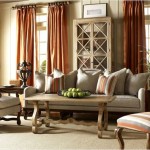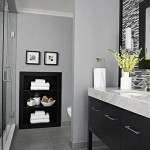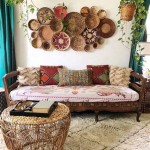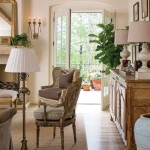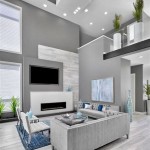What Is The Best Way To Decorate a Living Room?
Decorating a living room is a multifaceted process that demands careful consideration of various elements to achieve a harmonious and functional space. There is no single “best” way, as ideal decoration is subjective and dependent on individual preferences, lifestyle, and the architectural characteristics of the room itself. However, fundamental principles and strategic approaches can guide the process, ensuring a well-designed and aesthetically pleasing result. An effective living room acts as a central gathering place, reflecting the homeowner's personality while providing comfort and facilitating social interaction.
The process of decorating a living room should begin with a thorough assessment of the existing space. This includes analyzing the room's dimensions, natural light sources, existing architectural features, and any inherent limitations. Accurate measurements are crucial for selecting appropriately sized furniture and avoiding overcrowding. Understanding the flow of traffic within the room is also essential for arranging furniture in a way that promotes easy movement and functionality. Considering these initial factors lays the groundwork for a successful and personalized design.
Determining a Coherent Design Style and Color Palette
Establishing a cohesive design style forms the cornerstone of effective living room decoration. This involves selecting a particular aesthetic, such as modern, traditional, minimalist, bohemian, or eclectic. The chosen style should resonate with the homeowner's personal taste and complement the overall architectural style of the home. Each style possesses distinct characteristics in terms of furniture design, material selection, and decorative accents. For example, a modern aesthetic often features clean lines, neutral colors, and minimalist décor, while a traditional style might incorporate ornate details, rich colors, and classic furniture pieces. Defining a specific style provides a framework for making consistent design choices throughout the room.
The selection of a color palette is intrinsically linked to the chosen design style. Colors evoke specific emotions and can significantly impact the overall ambiance of the living room. Neutral colors such as white, gray, and beige offer versatility and can serve as a foundation for layering in bolder accent colors. Warm colors like red, orange, and yellow create a cozy and inviting atmosphere, while cool colors such as blue, green, and purple promote a sense of calmness and serenity. The color palette should be carefully curated to create a harmonious and visually appealing aesthetic. It is advisable to consider the amount of natural light in the room when selecting colors, as light levels can affect how colors appear.
Furthermore, understanding the principles of color theory can enhance the effectiveness of the chosen palette. Complementary colors, which are opposite each other on the color wheel, create a vibrant and dynamic contrast. Analogous colors, which are adjacent to each other on the color wheel, offer a more harmonious and subtle effect. Monochromatic color schemes, which utilize different shades and tints of a single color, promote a sense of sophistication and unity. Experimenting with different color combinations and considering the desired mood can result in a visually stunning and personally tailored living room.
Strategic Furniture Selection and Arrangement
Furniture selection is paramount in determining the functionality and aesthetic of a living room. The choice of furniture should be guided by the room's dimensions, the homeowner's lifestyle, and the overall design style. A sofa is typically the focal point of a living room, and its size and style should be carefully considered. Other essential furniture pieces include coffee tables, armchairs, side tables, and entertainment units. The materials, finishes, and upholstery of the furniture should complement the chosen color palette and design style. Investing in high-quality furniture pieces that are both durable and aesthetically pleasing is essential for creating a comfortable and inviting living space.
The arrangement of furniture is equally crucial in optimizing the flow and functionality of the living room. A well-arranged living room promotes easy conversation and circulation. The placement of the sofa should be prioritized, typically facing a focal point such as a fireplace, a television, or a large window. Armchairs and side tables should be positioned to create comfortable seating areas that encourage social interaction. The coffee table should be placed within easy reach of the sofa and armchairs, providing a surface for drinks, snacks, and books. Avoiding overcrowding and ensuring adequate space for movement is essential for creating a functional and comfortable living room.
Consideration should also be given to the scale and proportion of furniture within the room. Large furniture pieces can overwhelm a small living room, while small furniture pieces can appear lost in a large living room. Selecting furniture that is appropriately sized for the space is crucial for creating a balanced and harmonious aesthetic. Utilizing visual aids such as floor plans and furniture templates can assist in visualizing different furniture arrangements before making purchasing decisions. Experimenting with different layouts can help identify the most functional and aesthetically pleasing configuration for the living room.
Incorporating Decorative Accents and Lighting
Decorative accents play a pivotal role in personalizing and enhancing the aesthetic of a living room. These elements include artwork, rugs, throw pillows, curtains, lamps, and decorative objects. The selection of decorative accents should reflect the homeowner's personal taste and complement the overall design style and color palette. Artwork can add visual interest and personality to the room, while rugs can define seating areas and add warmth and texture. Throw pillows and curtains can introduce color, pattern, and texture, enhancing the overall comfort and visual appeal of the space. The key is to curate a collection of decorative accents that are both meaningful and visually cohesive.
Lighting is an essential element of living room decoration, both functionally and aesthetically. A well-lit living room is inviting and conducive to a variety of activities. Incorporating a combination of ambient, task, and accent lighting is crucial for creating a balanced and functional lighting scheme. Ambient lighting provides overall illumination for the room, while task lighting is essential for specific activities such as reading or working. Accent lighting highlights specific features, such as artwork or architectural details. The type of lighting fixtures selected should complement the overall design style and provide adequate illumination without being harsh or overwhelming.
Furthermore, natural light should be maximized whenever possible. Windows should be kept free of obstructions, and light-colored curtains or blinds can be used to filter sunlight and provide privacy. Mirrors can be strategically placed to reflect natural light and create a sense of spaciousness. Integrating plants into the living room can also enhance the connection to nature and improve air quality. These elements contribute to a more inviting and comfortable living environment. Consideration of the interplay between natural and artificial light, as well as the strategic placement of decorative accents, is important for creating a harmonious and visually appealing living room.
Ultimately, the best way to decorate a living room is by taking a holistic approach, considering all aspects of the space and integrating them into a cohesive design. This includes understanding the room's physical characteristics, establishing a cohesive aesthetic, selecting appropriate furniture and decor, and implementing a well-thought-out lighting plan. By following these guidelines, homeowners can create a living room that is both functional and beautiful and that reflects their unique personal style.
:strip_icc()/cdn.cliqueinc.com__cache__posts__212361__-2030968-1483470364.700x0c-8571e60cad7b42a981ab29ae10b5c153-497b002f87af4747b2ab38b560e7c0fd.jpg?strip=all)
How To Decorate A Living Room 20 Ideas And Common Mistakes

50 Inspirational Living Room Ideas Design

How To Decorate A Living Room 11 Designer Tips Houzz

Living Room Decorating Tips Ideas And Essentials Spaces
Interior Designers Reveal The Mistakes You Re Making In A Living Room

How To Decorate My Living Room Decor For Beginners

Living Room Decor Ideas For Your Home Design Cafe

How To Decorate Your Living Room

Seven Effective Drawing Room Decoration Ideas Design Cafe

Decorate Your Living Room On A Low Budget 5 Quick Ideas Sass
